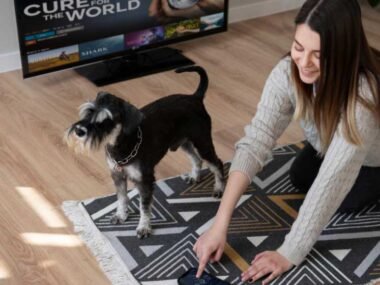Want to turn every customer order into a branding machine?
Custom wax deli paper is one of the most overlooked branding opportunities in the food industry. Most business owners think it’s just about wrapping sandwiches. They’re missing the point entirely.
Here’s the thing:
Every time someone unwraps their food, they’re staring directly at your brand for several minutes. That’s prime marketing real estate that most businesses waste on boring white paper.
What you’ll learn:
- Why Custom Wax Paper Beats Traditional Advertising
- The Psychology Behind Food Packaging That Converts
- Implementation Strategies That Actually Work
- ROI Calculations That Will Blow Your Mind
Why Custom Wax Paper Beats Traditional Advertising
Traditional marketing is expensive and forgettable. Custom wax deli paper is different because it works when customers are already in a buying mood.
Think about it…
When someone holds their food order, they’re happy. They’re excited to eat. They’re in the perfect mindset to absorb your brand message. That’s marketing gold right there.
Research shows that 60% of consumers are influenced by packaging design when making purchasing decisions. Most businesses completely ignore this opportunity.
But here’s where it gets interesting…
Your branded wax paper sheets don’t just protect the food. They create a complete brand experience that lasts throughout the entire meal. Unlike a Facebook ad that disappears in seconds, your custom wax paper stays with customers for 10-15 minutes while they eat.
Compare the costs:
A Facebook ad hits someone for maybe 3 seconds. Your custom wax paper gets 10+ minutes of focused attention. Which one sounds like better value?
The numbers don’t lie:
The global wax paper market was valued at approximately $1.1 billion in 2020 and is expected to grow at a compound annual growth rate of 2-3% from 2021 to 2028. Smart food businesses are already jumping on this trend.
The Psychology Behind Food Packaging That Converts
Here’s something most business owners don’t understand…
Food packaging triggers psychological responses that directly impact customer loyalty. When people see professional branded packaging, their brains automatically think “high quality” and “trustworthy business.”
This isn’t some marketing theory. It’s basic psychology.
Custom wax deli paper works because it hits multiple triggers at once:
- Trust:Professional packaging makes you look established
- Quality:Branded materials suggest better food quality
- Memory:Visual branding creates stronger recall than plain packaging
- Value: Customers assume branded businesses charge fair prices
Studies show that 76% of consumers are more likely to recommend brands that invest in quality packaging presentation. That’s free word-of-mouth marketing you can’t get anywhere else.
But there’s something even more powerful happening…
When customers post food photos on social media (and they will), your branded packaging becomes free advertising to their entire network. Every Instagram story and Facebook post featuring your custom wax paper is essentially a free commercial for your business.
Here’s the kicker:
Social media ads disappear after 24 hours. User-generated content with your branded packaging can stay online forever, continuing to market your business months after the original post.
Implementation Strategies That Actually Work
Most businesses approach custom wax paper completely wrong. They think throwing their logo on generic paper is enough.
It’s not.
Here’s how to do it right:
Use Your Brand Colors Consistently
Your custom wax paper should be instantly recognizable as your brand. Use the same colors across all your packaging materials. If customers can spot your brand from across the restaurant, you’re doing it right.
Keep Designs Simple and Clean
Don’t try to cram everything onto your wax paper. A clean logo, your website, and brand colors are usually plenty. Remember – there’s going to be food on this paper, so don’t overcomplicate things.
Position Your Logo Strategically
Logo placement matters more than you think. Put it where customers will see it first when unwrapping their food. Corner placement works well because it stays visible even when the paper is partially folded.
Include a Simple Call-to-Action
Don’t waste the opportunity. Add your website, Instagram handle, or a simple “Follow us for daily specials” message. Make it easy for happy customers to find you online.
Test Before You Commit
Not every design works equally well. Test different layouts with small batches before ordering thousands of sheets. Your customers will tell you what works best.
ROI Calculations That Will Blow Your Mind
Let’s talk real numbers because that’s what matters for your business.
Custom wax paper costs between $0.02 to $0.08 per sheet, depending on design complexity and order size. Compare that to other marketing:
- Facebook ads: $0.50-$2.00 per click
- Google ads: $1.00-$5.00 per click
- Print ads: $500-$5,000 per placement
- Custom wax paper: $0.02-$0.08 per impression
The math is simple:
Every customer who gets your branded packaging sees your brand message. If you serve 100 customers daily, that’s 100 brand impressions for under $8.00. Try getting 100 Facebook ad impressions for that price.
But here’s where it gets really interesting…
Research shows that consistent branding across all channels can increase revenue by 10-20%. If your business does $50,000 monthly, that’s an extra $5,000-$10,000 per month from brand consistency alone.
Calculate Your Potential Return
Use this simple formula:
Monthly orders × average order value × brand lift (10-20%) = additional monthly revenue
For most small food businesses, custom wax paper ROI ranges from 300% to 800% in the first year.
That’s a no-brainer investment.
Common Mistakes That Kill Results
Even smart businesses mess this up. Here are the biggest mistakes to avoid:
Too Many Colors: Stick to 2-3 colors maximum. More colors cost more and have less visual impact.
Ignoring Food Safety: Your printer must use food-safe inks and materials. This isn’t optional – it’s required by law.
Cheap Paper Quality: Low-quality paper tears easily and looks unprofessional. Invest in materials that reflect your brand standards.
Overcomplicated Designs: If customers can’t understand your message quickly, you’ve failed. Simple and clear always wins.
Inconsistent Branding: Your wax paper should match your other marketing materials. Mixed messages confuse customers and weaken brand recognition.
Your Step-by-Step Action Plan
Ready to get started? Here’s exactly what to do:
Week 1: Review your current packaging and identify branding opportunities. Gather your logo files, brand colors, and design guidelines.
Week 2: Find suppliers and request samples. Don’t choose based on price alone – quality matters for long-term success.
Week 3: Finalize your design and place your first order. Start small to test customer response.
Week 4: Launch and monitor results. Watch for customer comments and social media engagement.
Businesses that implement custom wax paper strategically see results within 30-60 days. The ones that treat it as an afterthought rarely see any meaningful impact.
Technical Requirements You Can’t Ignore
Don’t skip the boring stuff. Your custom wax paper must meet food safety standards and local regulations.
Essential requirements:
- FDA-approved materials and inks
- Proper grease resistance for your food types
- Correct sizing for your menu items
- Health department compliance
Work with suppliers who understand food service requirements. The cheapest option usually isn’t the smartest when customer safety is involved.
Wrapping It Up
Custom wax deli paper isn’t just packaging – it’s a strategic branding investment that keeps working long after the food is gone.
Key takeaways:
- Quality materials and professional design are non-negotiable
- Simple, consistent messaging always beats complicated designs
- Track results and optimize based on real performance data
- Focus on long-term brand building, not just immediate sales
Remember, every piece of custom packaging is a brand ambassador working for your business. Make sure it represents you well.
The businesses that understand this are the ones turning casual customers into loyal brand advocates. The ones that don’t? They’re still wondering why competitors with “similar food” are growing faster while they’re stuck with plain white paper that does absolutely nothing for their brand.










